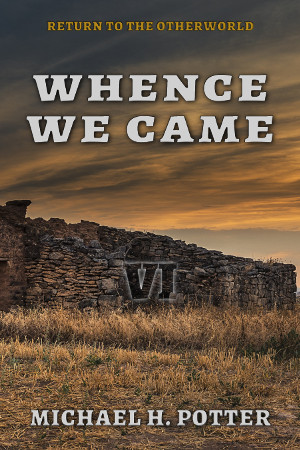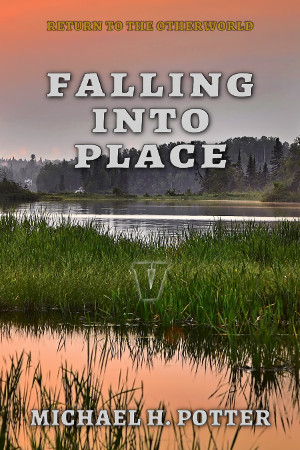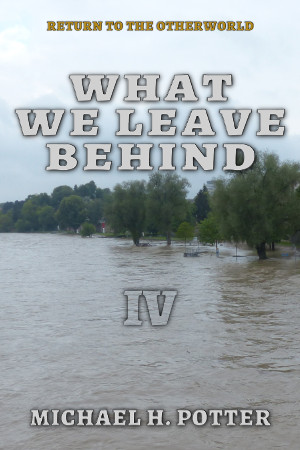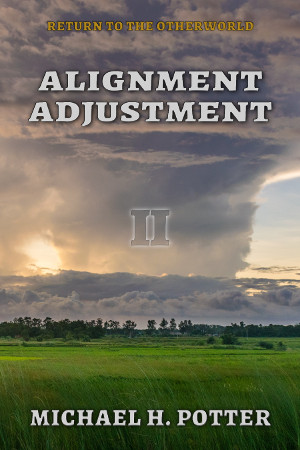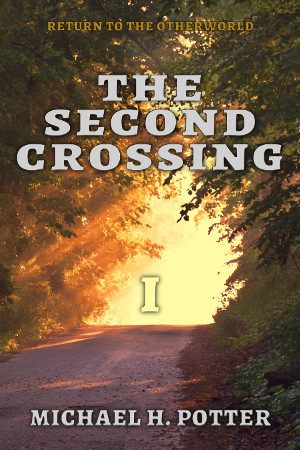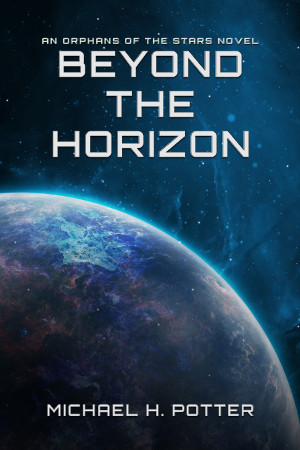On my Patreon page, I’ve been posting drafts of a series of long novellas (or short novels, whichever you prefer) called Chronicles of the Otherworld. I won’t reiterate the entire plot of the story here, as that’s what the Patreon is for. Suffice to say, it’s a kind of alternate-universe thing, except without the alternate universes.
On the “otherworld” are a number of invented cultures loosely based on the indigenous peoples of the Americas, but with about 10,000 years of parallel development—including 500 years free from European colonization—and some genetic engineering by a mysterious precursor race. All this has caused their languages to be different from any on Earth. In other words, I built a story around a conlang. It’s okay; Tolkien did pretty much the same thing.
This post describes the pronunciation and orthography of the main conlang of the Chronicles of the Otherworld series, called Virisai. Story-internally, it is spoken by approximately one million people in and around the pre-industrial nation of Vistaan, where most of the Otherworld series takes place. Externally, I started making it in 2013, which doesn’t really feel like four years ago. My goal with Virisai was to make a natural-looking language that wasn’t too hard to grasp (the protagonists only have about two and a half months) while having no real connection to Earthly tongues. Ten thousand years, after all, is enough to give us the linguistic variety of Europe, the Middle East, and most of India…or of the indigenous languages of the Americas. In future posts, if there is interest, I’ll delve more deeply into the language. It’s one of my most developed conlangs, second only to Suvile, which I worked on from 2003–2010, and it remains in development, as I’m currently working on future entries in the series.
Finally, a word before we begin: the meat of this post is written from the point of view of someone treating Virisai as an actual language. If you prefer to think of it as the writing of a character in the story, that’s fine. From this point forward, though, I won’t be referring to any “external” qualities of the language, only what a speaker would understand.
The sounds of the language
Virisai has a fairly simple phonology. In total, there are 31 sounds: 21 distinct consonants, 5 vowels that show distinction between short and long. All of these sounds are simple, in that there are no phonemic distinctions of consonant length, palatalization, tone, or other complex phonetic properties. Speaking Virisai is not difficult for most people, unlike some of its neighboring tongues. The orthography, however, can be a bit difficult to understand.
While there are some dialectal differences, mostly between east and west, these do not rise to the level of unintelligibility. For the most part, this guide will describe the “standard” dialect of the east, with western differences noted as they arise.
Vowels
As there are fewer vowels, it seems prudent to begin with them. As stated above, Virisai has five main vowels, with each coming in a short and long variety. Long vowels sound approximately like double-length versions of their short counterparts, but many also give the short vowels a more lax pronunciation.
-
A: The vowel a (as in aloc “mill”) is most often pronounced like the Spanish or Italian a. At the end of a word, it may instead sound like German er as in oder. Western dialects use a pronunciation like a in English cat at the beginning of a word.
-
E: The vowel e (as in esau “lake”) is commonly pronounced like the e in English bet. In stressed positions, it can also sound like the more tense French é of été. Colloquially, an unstressed e can also be pronounced as a schwa, as in English taken.
-
I: The short vowel i (as in imec “gift”) should be pronounced as in Spanish, but it very often becomes lax, as in English bit. This relaxation is common among lower-class Virisai speakers in the west.
-
O: Short o (as in oca “but”) usually sounds like the o in French sot, but that of English not is sometimes heard instead, especially in unstressed syllables.
-
U: The short u (as in uro “round”) is pronounced as in Spanish, but the oo sound of English foot is also acceptable.
-
AA: The long vowel aa (as in baad “dog”) is a longer version of a. It can be approximated by the British English pronunciation of bath, or simply by stretching out the pronunciation of a.
-
EI: The vowel ei (as in eib “fish”) sounds like a longer variant of stressed e. The English diphthong ay of say is a close, if strictly incorrect, approximation.
-
IE: Long ie (as in mies “top”) sounds like English ee as in feet.
-
OO: Long oo (as in sool “glass”) is pronounced like a longer o. As with ei above, the English diphthong ow of glow is close, although not exactly the same.
-
OU: The vowel ou (as in crous “to write”) sounds like English oo in boot.
-
AI or AY: Both of these two spellings (ai as in ain “corn”; ay as in ayc “duck”) represent the sound of i in English like.
-
OI or OY: These two spellings (oi as in boi “nut”; oy as in proy “mad”) are pronounced as in English boy.
-
AU: The diphthong au (as in aus “cat”) sounds like ou in English out or au in English caught. The two sounds are in free variation; the preference is largely personal. The sound can also be spelled aw, if needed to prevent ambiguity.
-
EU: The diphthong eu (as in keud “deer”) has no exact English equivalent, but it can be approximated by the sound of you. When detailing western Virisai, this sound is often spelled ew.
In addition, some western dialects have a set of four front rounded vowels, two long and two short. These arise regularly from combinations of the consonant y (see below) and the vowels u, ou, o, and oo. They are presented here for completeness.
-
Y: This sound (as in lys “flower”) is a short vowel pronounced like French u or German ü.
-
UE: The vowel ue (as in bueder, a type of grain) is the long form of y, pronounced like German ü.
-
OE: The short vowel oe (as in goer “now”) is pronounced like French eu in peu.
-
EU: The long vowel eu (as in Beus, a month name) is pronounced like German ö, a longer form of oe above.
Consonants
Despite there being more of them, the consonants are much more regular in the correspondence between their written and spoken forms. Only in a few instances are there great differences. Here, we will leave those for last.
First, these are the Virisai consonants most similar to their English equivalents:
-
B: The sound b (as in boun “big”) is pronounced as in English bee.
-
D: The consonant d (as in den “from”) is pronounced the same as in English dog.
-
G: The consonant g (as in gos “cold”) has the same pronunciation as in English good.
-
H: The letter h (as in heid “this”) has the same pronunciation as in English hat under most circumstances. When followed by b, d, or g, however, it instead has no sound, and causes the following consonant to be pronounced as p, t, or k, respectively.
-
J: The letter j (as in jon “give”) sounds like that of English jest.
-
K: The letter k (as in kit “dice”) has the same sound as in English sky. There should be no puff of air following it, unlike in English key. This letter is only used before e, i, ei, and ie.
-
L: The consonant l (as in los “last”) sounds like the “clear” l of English let. It doesn’t normally have the “dark” sound of American English feel, though few native speakers can tell the difference.
-
M: The sound m (as in maame “mother”) sounds the same as in English mom.
-
N: The sound n (as in nin “sky”) has the same sound as English night.
-
NY: The sound written ny (as in nyaal “south”) is pronounced as the ni in English onion, or like the Spanish ñ.
-
P: The consonant p (as in pic “horn”) has the same pronunciation as in English spit. Unlike in English, there should be no audible “puff” after the sound. (In technical terms, it is unaspirated.)
-
R: The letter written r (as in rad “say”) has a pronunciation similar to English r in red, not that of the Spanish, French, or German r.
-
T: The consonant t (as in tec “temple”) sounds like that of English stay. Like Virisai p, it is also unaspirated.
-
V: The letter v (as in veis “go”) has a sound like that of Spanish b or v, not the English v. It can be approximated by pronouncing English v without the teeth.
-
W: The letter w (as in wan “river”) sounds like English w. It is distinct from v, but the difference can be hard for some to hear. V, however, is more forceful.
-
Y: The consonant y (as in yet “do”; not the same as the dialectal vowel sound y above) sounds exactly like English y in yet.
The rest of the consonant sounds are written in ways that may change depending on the position of the word, the following sounds, or other factors.
-
C: The letter c can represent a hard k (as in caar “name”) when written before anything other than e, i, ie, or ei. Before those letters (as in cil “small”), it is instead pronounced like the ch in English chat.
-
CI: The digraph ci (as in ciar “bottom”) is the standard writing for the ch sound of English char, used whenever a plain c would be pronounced as k.
-
F: The letter f (as in faus “rain”) has the same pronunciation as v above. It is written with a different letter in Virisai, reflecting a distinction of sound that is now lost.
-
NN: A doubled nn is not actually used in Virisai, but the author has used it to transcribe the word Ninne (feminine form of Nina, a racial term) so as to avoid confusion with the English word nine.
-
S: The letter s changes its pronunciation depending on its environment. At the start of a word (as in si “day”), it is pronounced like the s in English see. The same is true at the end of a word (as in pries “only”), when followed by a vowel other than i, e, ie, or ei (as in masa “yes”), or followed by a consonant (as in ostir “shoulder”). When preceding one of the four vowels mentioned (as in tiesie “short”), it is instead pronounced like the sh in English show.
-
SH: At the beginning of a word, or when preceding a consonant, the digraph sh (as in shei “daytime”) is pronounced as in English show.
-
SI: The digraph si (as in sias “blue”) is an alternate spelling of sh, used much more commonly when ambiguity would not arise.
-
SS: The doubled ss (as in susse “smooth”) is pronounced like the s in English set. It is used before e, i, ie, and ei, except at the beginning of a word.
-
Z: Like s above, the letter z changes pronunciation depending on where it occurs. Except directly before one of the four front vowels above (as in zaad “west”), it is pronounced like English z in zoo. Before front vowels (as in feizen “trade”), it sounds like the z in English azure.
-
ZH: As with sh, the digraph zh (as in zhaan “safe”) is written at the beginning of a word to indicate the z sound of English azure.
-
ZI: As with si, the digraph zi (as in ziule “fort”) is an alternate spelling of zh.
-
ZZ: Like ss, the doubled zz (as in dezzic “late”) is only used before front vowels. It is pronounced like the z in English zoo.
Consonant sequences
The grammar of Virisai causes a few cases where consonants can form sequences that look like clusters, but are pronounced as if single consonants. In each of the following, the first member of the sequence is actually silent: dt, bp, gc, zs, td, pb, cg, sz, szi, zsi, dci, tj.
Stress
Under normal circumstances, Virisai stresses the syllable before the last—the penultimate. However, a long vowel or a diphthong in the final syllable will receive stress instead. Inflection affixes are almost never stressed, but they can cause a stress shift in a word’s stem: singular soulos (stress on the first syllable), plural soulossin (stress on the second).
Closing words
The preceding should be enough to pronounce any of the utterances encountered in Chronicles of the Otherworld. Understanding them, of course, is a matter for future posts. As the series progresses, I’ll write further entries describing the Virisai language, so those willing to learn can follow the story at a deeper level.
